Übung 2
Mit der folgenden Übung kannst Du testen, wie gut Du die Ereignisidentifikation beherrschst. Dafür haben wir zehn
Beispiele ausgesucht. Sie sind in elektronischer Form hier zum Herunterladen gespeichert.
Das Programm dafür findest Du hier zum Herunterladen.
Bei den Internationalen Masterclasses sind sie
bereits auf Deinem Desktop gespeichert. Diese müssen in das Programm MINERVA eingelesen werden (über "Read Event Locally").
Deine Aufgabe besteht darin, die Ereignisse in Signal- und Untergrundereignisse zu unterscheiden. Zu den Signalereignissen gehören dabei
nur solche Ereignisse, bei denen genau ein W-Boson oder genau zwei elektrisch entgegengesetzt geladene W-Bosonen produziert worden sind. Bei den Signalereignissen mit genau einem W-Boson bestimmst Du außerdem, ob das
W-Boson in ein Elektron oder Positron bzw. Myon oder Antimyon und das jeweils zugehörige (Anti)neutrino zerfallen ist.
Die Untergrundereignisse setzen sich aus Ereignissen mit Jets, Z-Bosonen und
Top-Quark-Paaren zusammen.
Deine Ergebnisse überprüfst Du mit Hilfe der folgenden Tabelle. Wähle für jedes Ereignis den Deiner Meinung nach zugrundeliegenden
Prozess aus. Durch Auswahl der Schaltfläche "Aufgaben bestätigen" kannst Du die
Anzahl der von Dir richtig identifizierten Ereignisse feststellen. Durch Auswahl der Schaltfläche "Korrekte Lösungen" kannst Du Dir
die richtigen Lösungen anzeigen lassen.
Viel Spaß beim Test!
-
 MINERVA can only display information on muons in cross-sectional view if the muon travels through the barrel region. In this example the muon leaves in forward direction and thus can only be identified with help of the side view. Tracking and calorimeter information is available in cross-sectional view though.
MINERVA can only display information on muons in cross-sectional view if the muon travels through the barrel region. In this example the muon leaves in forward direction and thus can only be identified with help of the side view. Tracking and calorimeter information is available in cross-sectional view though.
-
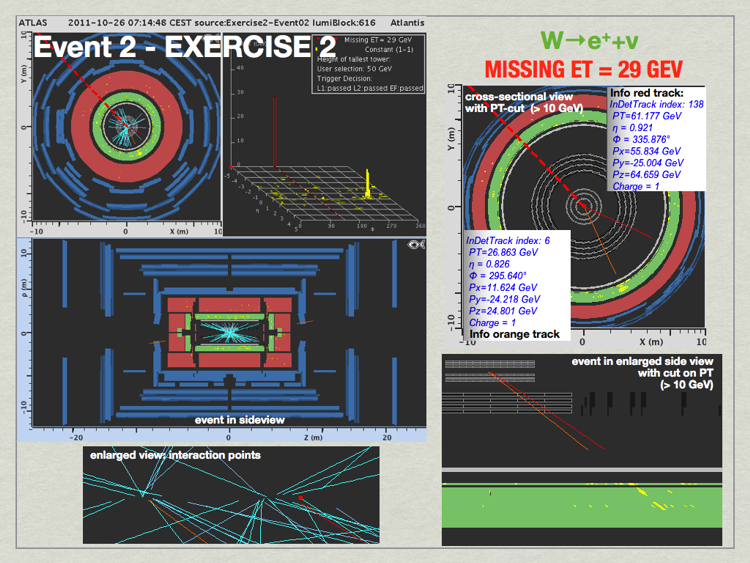 The red track cannot be identified as an electrically charged lepton, arisen from a different vertex (compared to the positron shown with orange track) and is thus not of interest.
The red track cannot be identified as an electrically charged lepton, arisen from a different vertex (compared to the positron shown with orange track) and is thus not of interest.
-
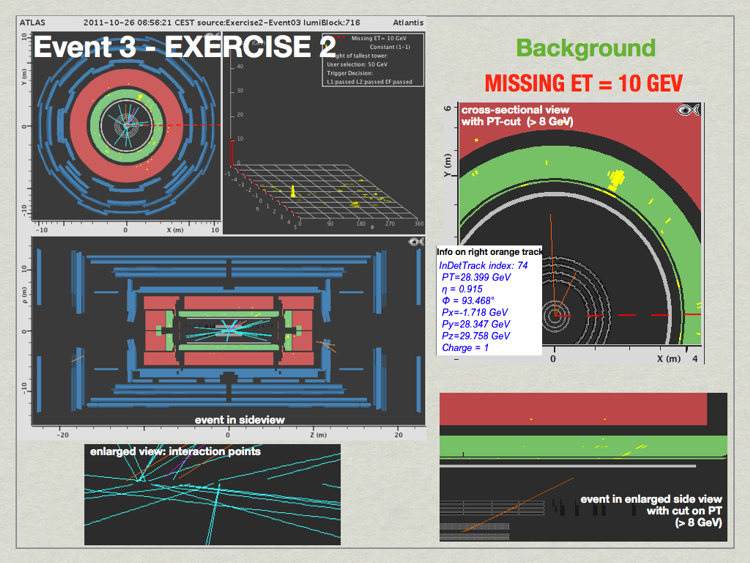 Missing transverse energy is too little.
Missing transverse energy is too little.
-
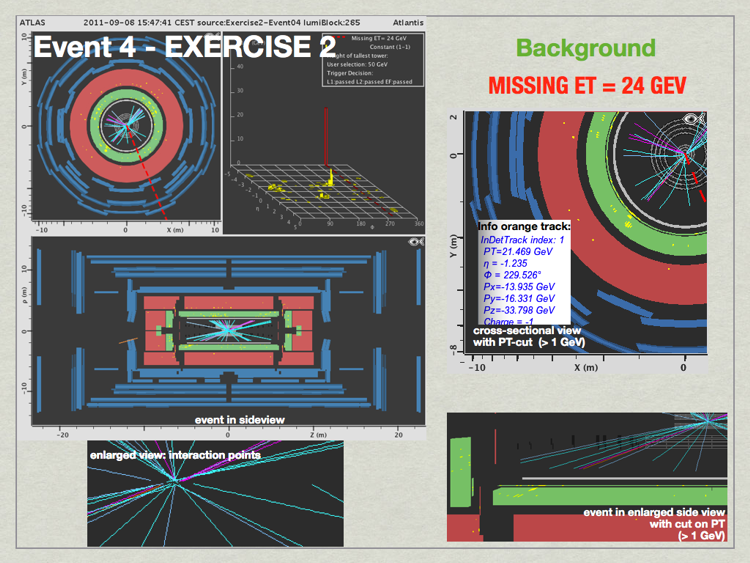 Missing transverse energy is too little. Electron candidate (orange track) is not well isolated from electrically charged particles around.
Missing transverse energy is too little. Electron candidate (orange track) is not well isolated from electrically charged particles around.
-
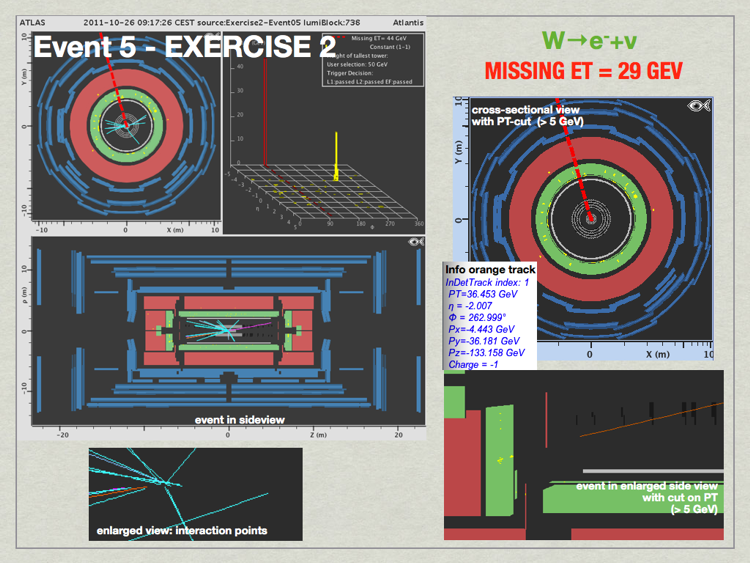 MET>25 GeV, there is exactly one electron (electric charge = -1) in the event, well isolated. It is not visible in cross-sectional view since it moves in forward direction but can be clearly identified in side view.
MET>25 GeV, there is exactly one electron (electric charge = -1) in the event, well isolated. It is not visible in cross-sectional view since it moves in forward direction but can be clearly identified in side view.
-
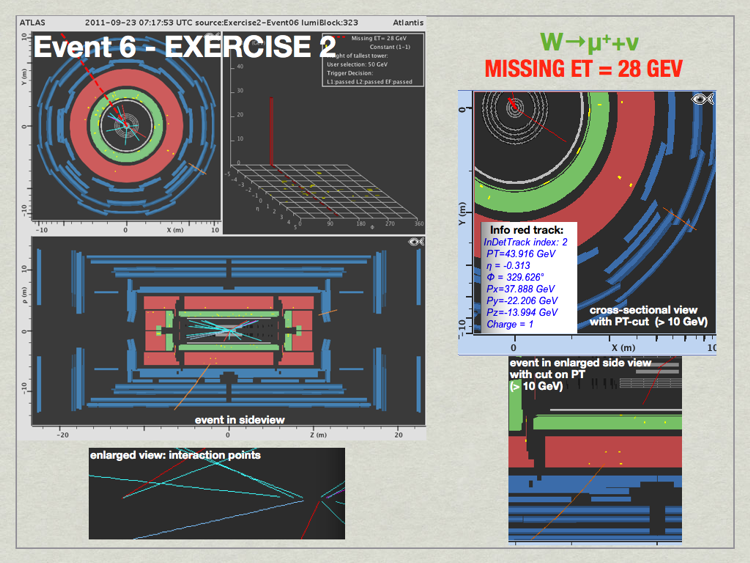 MET>25GeV, there is exactly one anti-muon (electric charge = 1) arising from the right vertex (see enlarged side view on bottom left), well isolated, with PT>20GeV.
MET>25GeV, there is exactly one anti-muon (electric charge = 1) arising from the right vertex (see enlarged side view on bottom left), well isolated, with PT>20GeV.
-
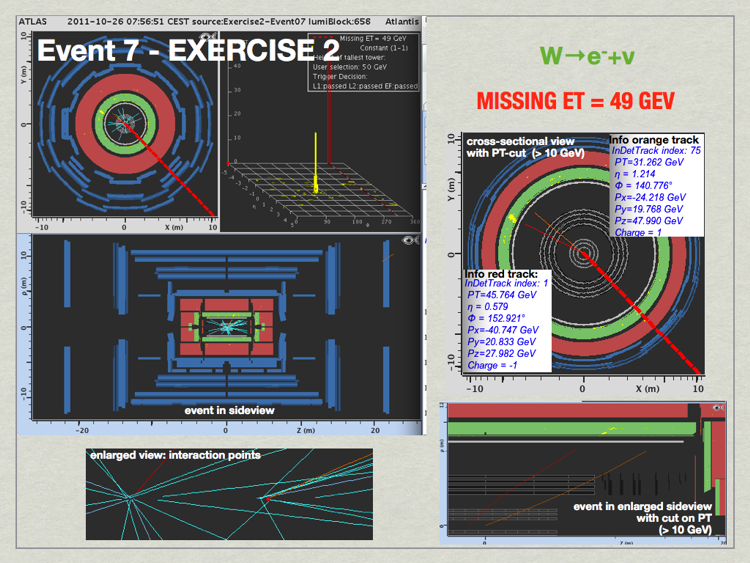 MET > 25 GeV. Two hight-PT, isolated tracks arising from two vertices. Only the red track (PT > 20 GeV) can be combined with calorimeter clusters and thus identified as electron (electric charge = -1).
MET > 25 GeV. Two hight-PT, isolated tracks arising from two vertices. Only the red track (PT > 20 GeV) can be combined with calorimeter clusters and thus identified as electron (electric charge = -1).
-
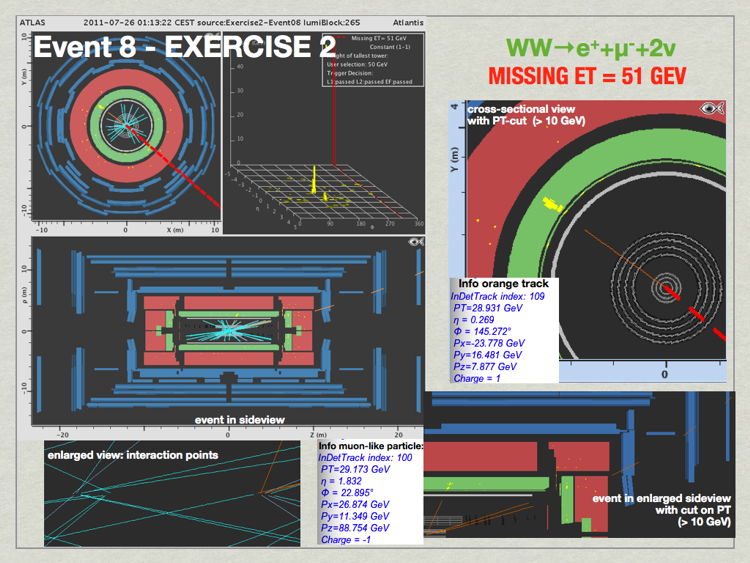 MET > 25 GeV, there are exactly two, oppositely electrically charged leptons in the event (a positron and a muon), both are well-isolated from Jets. The muon can only be identified in side view since it moves in forward direction. There is also another high-PT track in the event, which cannot be assigned to third electrically charged lepton.
MET > 25 GeV, there are exactly two, oppositely electrically charged leptons in the event (a positron and a muon), both are well-isolated from Jets. The muon can only be identified in side view since it moves in forward direction. There is also another high-PT track in the event, which cannot be assigned to third electrically charged lepton.
-
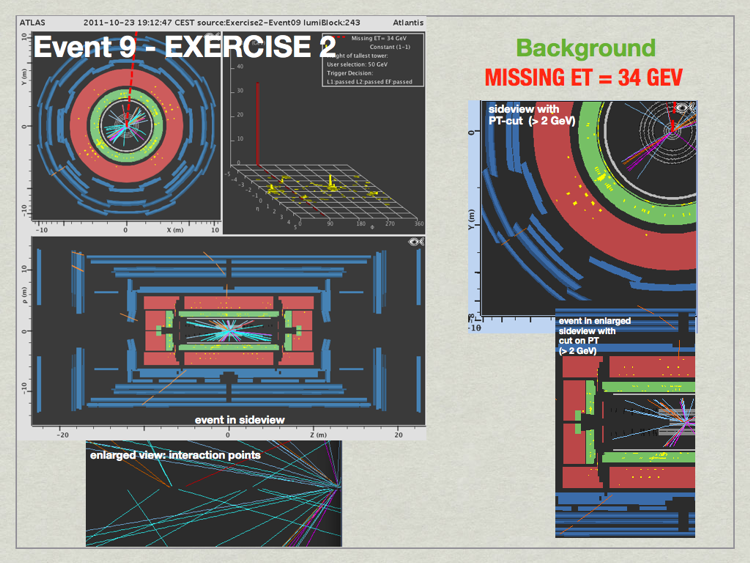 Possible muon candidates are not isolated from Jets.
Possible muon candidates are not isolated from Jets.
-
 There are two orange tracks in the event. The one that can be combined with clusters in the calorimeter goes up in cross-sectional-view. It is overlaid by a purple track, whose accompanying particle was produced so close to our electron candidate, that we cannot really say it was isolated (look at the enlarged views).
There are two orange tracks in the event. The one that can be combined with clusters in the calorimeter goes up in cross-sectional-view. It is overlaid by a purple track, whose accompanying particle was produced so close to our electron candidate, that we cannot really say it was isolated (look at the enlarged views).










